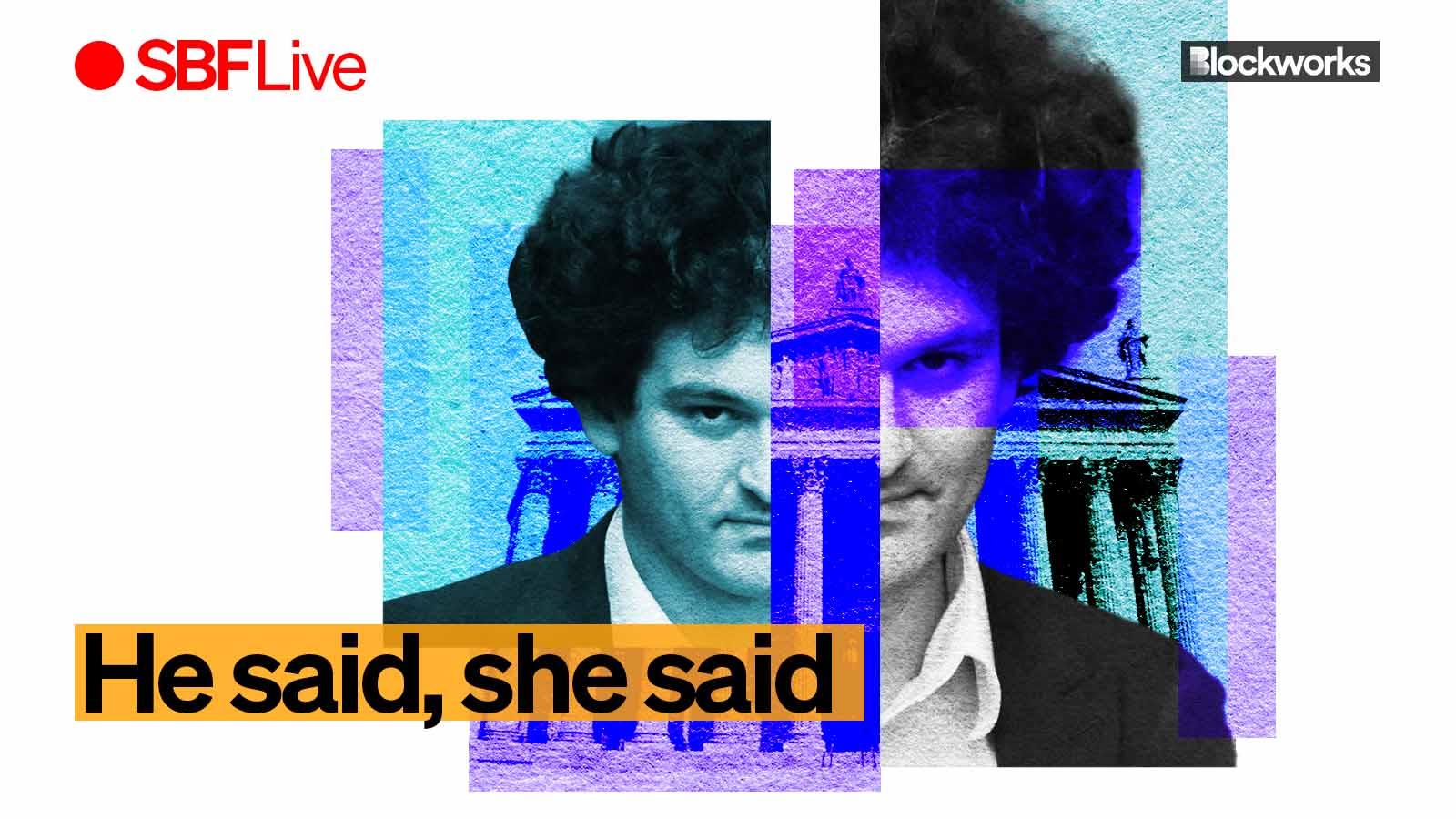He said, she said: Testimonies from SBF and Caroline Ellison aren’t matching up
Sam Bankman-Fried and Caroline Ellison tell different versions of a story about Alameda’s balance sheets — and they can’t both be telling the truth

Artwork by Crystal Le
Sam Bankman-Fried subjected the jury to around five hours of roundabout answers and some seemingly convenient amnesia when he took the stand at his own criminal trial this week.
One of the only things we know for certain is that somebody is lying.
Over four weeks of trial, jury members heard from 18 government witnesses. The list includes three members of Bankman-Fried’s former inner circle: Caroline Ellison, Gary Wang and Nishad Singh, all of whom have pleaded guilty to multiple federal counts in the hopes of receiving lenient sentences.
Now, from the witness stand himself, Bankman-Fried is attempting to reclaim the narrative.
Bankman-Fried, the disgraced founder of FTX and Alameda Research, faces a maximum sentence of 115 years in prison. In what legal commentators are calling a ‘Hail Mary’ move, he has elected to take the stand during his trial, and, under oath, present a new version of events to the jury.
Former Alameda CEO Caroline Ellison, across three days of testimony, stated that she shared updated Alameda balance sheets with Bankman-Fried regularly. In mid-June 2022, when loans were being recalled after a sharp market decline in May, Alameda owed about $10 billion to FTX customers, Ellison said.
According to Ellison, Bankman-Fried, knowing the true financial situation at Alameda, instructed her to create “some alternative ways of presenting” the balance sheet. She then came up with seven falsified versions.
“I just thought I’d prepare a variety of things and ask Sam what he wanted to do,” Ellison said on the stand.
Read more: SBF demanded 7 versions of Alameda’s balance sheet, Ellison testifies
Ellison said she sent an eight-tab spreadsheet — composed of seven fake balance sheets and a single correct one, to Bakman-Fried and they discussed each option.
“I explained roughly what I did in various tabs,” Ellison said. “He said that alternative 7 looked good and that I should send that one to Genesis.”
Bankman-Fried has a different memory. He said he does not recall ever discussing the alternative versions. He also testified that he and Ellison did not discuss any plans to falsify the documents.
“I recall [Ellison] saying that she was tentatively planning on sending something like this out, that she had thought about a few different ways of constructing it,” Bankman-Fried testified Friday. “I don’t remember any detail being discussed about that. And I remember looking over it and saying that it seemed reasonable to me.”
On Monday, he added that he’s not even sure if Ellison sent him the document at all.
“I don’t specifically remember there being eight tabs,” Bankman-Fried said. “There very well may have been.”
When the prosecutor reminded Bankman-Fried that Google metadata showed that he opened the eight-tab document in June 2022, he doubled down, claiming that he did not recall doing so.
Bankman-Fried’s cross-examination continues Tuesday. The government expects another two hours or so of questioning, and then the defense will have an opportunity for a redirect.
If counsel continues on pace, both sides have told the court they expect to present closing arguments this week. The government and defense have noted that they will each likely take several hours to present their final pitches to the jury.
Get the news in your inbox. Explore Blockworks newsletters:
- The Breakdown: Decoding crypto and the markets. Daily.
- 0xResearch: Alpha in your inbox. Think like an analyst.






